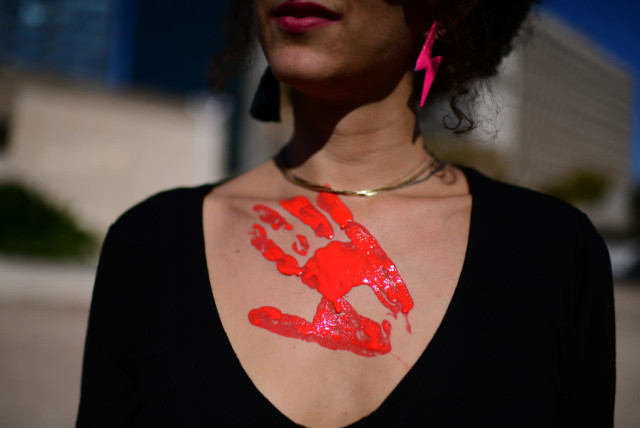One-third of Israeli women experience sexual abuse by healthcare providers, study finds

A new Health Ministry study exposes alarming rates of sexual abuse in the Israeli healthcare system, low incident report rates, and a lack of awareness of who to report to.
A new study published on Monday, which included hundreds of women, found that one-third experienced sexual abuse from a healthcare provider in Israel.
The reported abuse included verbal harassment, touching, inappropriate acts, and even rape. The majority of the perpetrators are doctors, with one-third of them being gynecologists.
The new study, conducted for the Health Ministry by the Myers-JDC-Brookdale Institute, is one of the first of its kind in any healthcare system worldwide.
The study included an online survey answered by 963 women over the age of 21, conducted from January to June 2023. Additionally, the study involved in-depth interviews with female professionals and patients who had experienced sexual abuse in the healthcare system, as well as analysis of online conversations.
The report reveals that 37% of women experienced sexual abuse from a healthcare provider, and 22% experienced such abuse in the past five years (similar figures to those of sexual abuse outside the healthcare system).
According to the findings, the most common types of abuse were staring (6.9% of those affected were victims of staring alone), minor comments and gestures (7% of those affected were victims of comments alone), requests to get naked (13% of respondents who were affected), touching (13% of respondents who were affected), sexual propositions (9% of respondents who were affected), inappropriate acts (5% of respondents who were affected), rape and forced inappropriate acts (5% of the respondents who were affected), and extortion through threats (4% of the respondents who were affected).
37% of injuries were caused by non-gynecologist doctors, 32% by gynecologists, 12% by other healthcare professionals, 6% by dentists and oral health professionals, and 5% by nursing professionals.
Most abuses occurred in medical facilities, with 50% of injuries in public healthcare clinics, 28% in private clinics, and 16% in hospitals. 14% of respondents reported being harmed by the same caregiver more than once, up to five times, and 3% reported being harmed by the same caregiver more than five times.
52% of women who were harmed in the healthcare system were not aware of the existence of a designated authority responsible for preventing sexual harassment in the place of injury, and 24% believed that there was no such responsible authority.
Additionally, only 7% of women who were harmed in the healthcare system saw prominent advertising regarding the presence of a designated authority for preventing sexual harassment in the place where the harm occurred. Only 7% of women who were harmed reported the injury to any official entity.
Report rates have been quite low
In examining the reasons for the low reporting rate, it emerges that there was doubt that the actions of the caregiver constituted sexual harassment (23%), doubt that the case was severe (17%), embarrassment (13%), lack of trust in the system's ability to address the issue (9%).
Additionally, 4% reported that non-reporting stemmed from fear of the offending party or concern that the complainant would be denied medical treatment following the complaint. Similar findings also arose from in-depth interviews conducted by the researchers with the affected women and professional women in the field.
Following the injury, 28% of women who responded to the survey reported emotional or psychological damage, 9% reported personal or social damage, and 4% reported physical or medical damage. Regarding long-term effects among the victims, it was found that 32% reported giving up medical treatment following the injury, 19% reported losing trust in doctors and caregivers, and 14% reported being cautious, suspicious, overly aware, and setting boundaries following the injury.
"The research reflects a very bleak picture, as very few of the victims were aware of who to turn to," said Professor Rachel Nisanholz-Gannot from the Brookdale Institute. "No woman should go through a sexual assault, certainly not without any support, and every woman should know where to turn and that her referral will be treated promptly and professionally."
"We take any event in which a patient experiences harassment very seriously. However, the severity of the actions we take is determined by law," said Anat Leichter, head of complaint treatment of sexual harassment by medical professionals at the Health Ministry.
"Since previous publications in 2022, about 180 complaints have been received at the Public Acceptance Commission for Medical Professions, all having been thoroughly and sensitively examined, with more than 100 complaints taken further for clarification. Among the investigation results, we recommended submitting a complaint to the disciplinary unit in 13 cases. In addition, in 12 of the complaints, sanctions were taken within the medical institution, such as dismissal or severe warning towards a doctor."
The Health Ministry reminds everyone who has been harmed or harassed on a sexual basis that they can contact the supervisors for sexual harassment in the various organizations or the supervisor in the Health Ministry for the field of sexual harassment by therapists at the Public Acceptance Commission for Medical Professions.
Jerusalem Post Store
`; document.getElementById("linkPremium").innerHTML = cont; var divWithLink = document.getElementById("premium-link"); if (divWithLink !== null && divWithLink !== 'undefined') { divWithLink.style.border = "solid 1px #cb0f3e"; divWithLink.style.textAlign = "center"; divWithLink.style.marginBottom = "15px"; divWithLink.style.marginTop = "15px"; divWithLink.style.width = "100%"; divWithLink.style.backgroundColor = "#122952"; divWithLink.style.color = "#ffffff"; divWithLink.style.lineHeight = "1.5"; } } (function (v, i) { });

